Physical quantity,product of vector and lami's theorem
VECTOR AND SCALARS
Physical Quantity
May have numerical value, units and any specified direction.
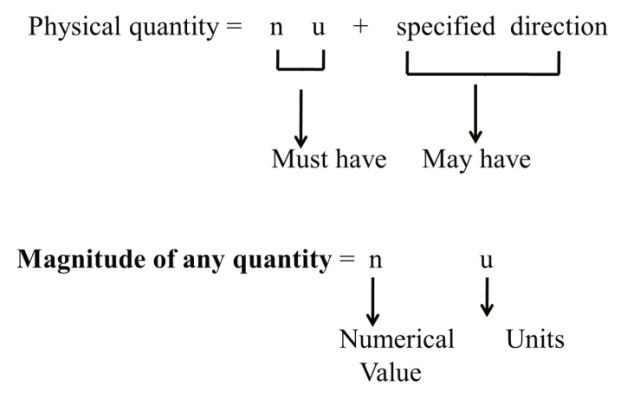
Note:- Some physical quantities only having numerical value not specified direction.
Ex:- Refractive index, strain etc.
We can say any physical quantity Must/may have numerical value(n), unit (u) and specified direction.
PHYSICAL QUANTITY (N + U + DIRECTION) MAY/MUST HAVE
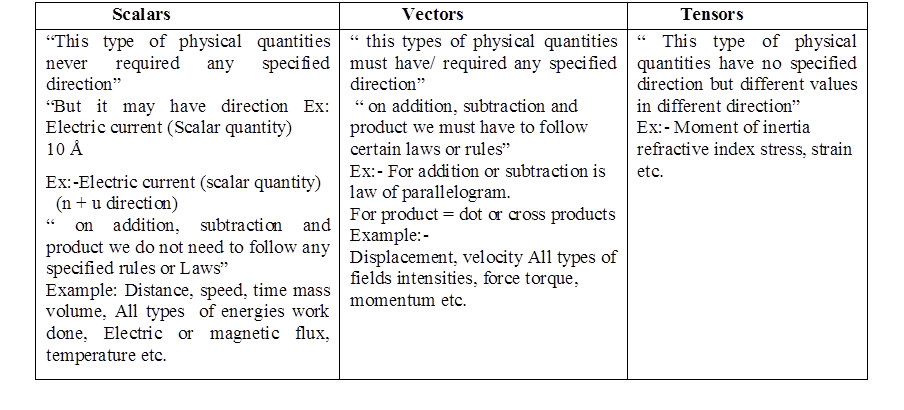
Note:
Scalars or zero order tensors: Any physical quantity have only one component.
Vectors or first order tensors: Any physical Quantity have component greater then one but less than or equal to four.
REPRESENTATION OF VECTOR:

Types of vectors
(1) Polar Vectors:
Vectors related to linear motion of any object Ex. Displacement, velocity, Force etc.
(2) Axial vectors:
Vector represent rotational effect and are always along the axis of rotation Ex: Angular velocity, torque, angular momentum etc.
(3) Null vector or zero vectors:
Vector whose magnitude is zero and direction in determinant.
(4) Unit vectors:
Vector having magnitude equals to one (unity) but must be some specified direction representation of unit vector – , A![]()
![]()
STANDARD UNIT VECTOR
These are ![]()
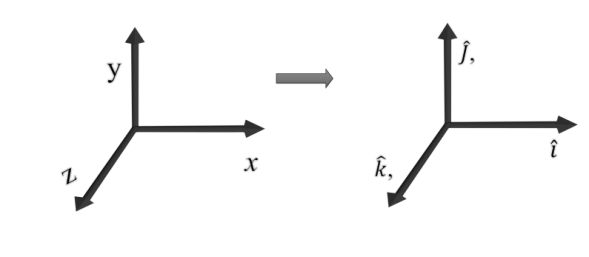
Direction should be on your copy
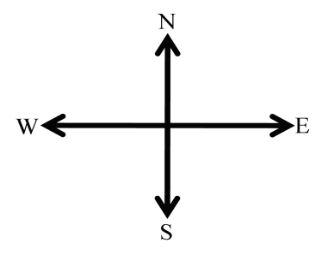
UNDERSTANDING OF UNIT VECTORS
1 –D Motion: Motion along x or y or z
A car is moving with 60 k/m toward or due east then speed (scalar) = 60 km/h
Velocity (Vector) = 60 km/h


2 –D Motion:
A car is moving with 60 k/m due north – east then
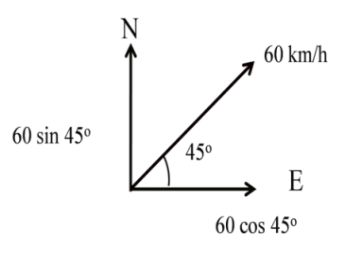
![]()
![]()
2 –D vector
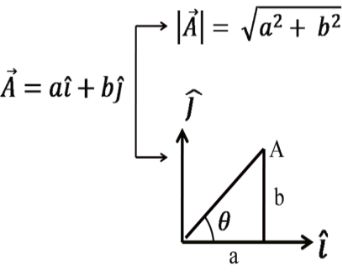
![]()
With x axis or with horizontal
![]()
With Y-axis or with vertical
3 –D Vector
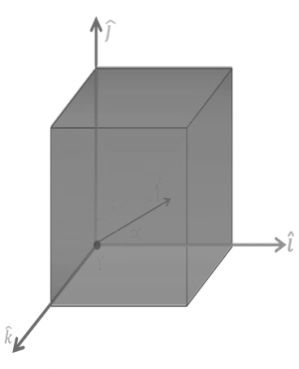
![]()
![]()
![]()
![]()
DIRECTION
![]()
With x-axis
![]()
With y-axis
![]()
With z-axis
ADDITION AND SUBSTRACTION OF VECTORS
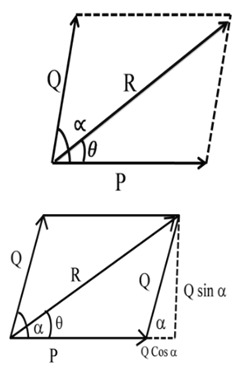
Law of parallelogram
![]()
![]()
![]()
![]()
![]()
![]()
![]()
![]()
![]()
![]()
![]()
![]()
![]()
RESOLVING OF ANY VECTOR
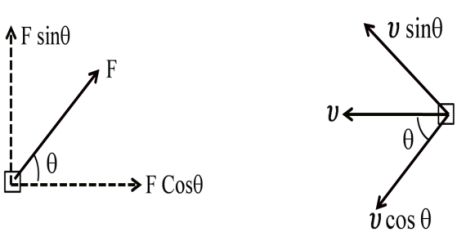
Example. Two equal vector have a resultant equal to either of the two. The angle between them is
(a) 90o (b) 60o
(c) 120o (d) 0o
Solution: By using expression R2 = P2 + Q2 + 2PQ cosa
![]()
x2 = 2x2 (1 + cosa)
![]()
cos a = -1/2 = a = 120o Answer is (c)
Example: Two vector having equal magnitude of x units acting at an angle of 450 have resultant ![]() units the value of x is
units the value of x is
(a) 0 (b) 1
(c) ![]() (d)
(d) ![]()
Solution: Using the expression R2 = P2 + Q2 + 2PQ cosµ
![]()
![]()
![]()
![]()
![]()
Þ x2 =1 Ans (b) Þ x = 1 Ans (b)
![]()
(a) 0° (b) 180°
(c) 90° (d) 120°
![]()
![]()
= 4PQ cos q = 0
Cos q = 0
q = 90o Answer is (c)
LAMI’S THEOREM
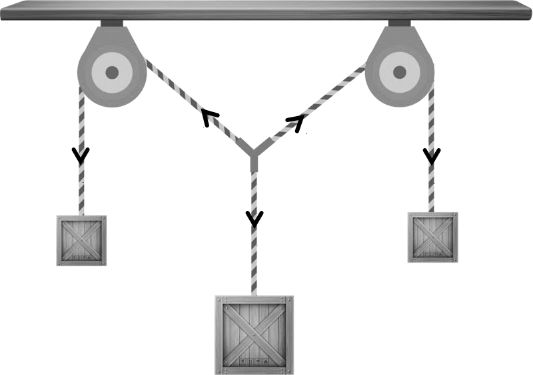
![]()
Product of Vectors
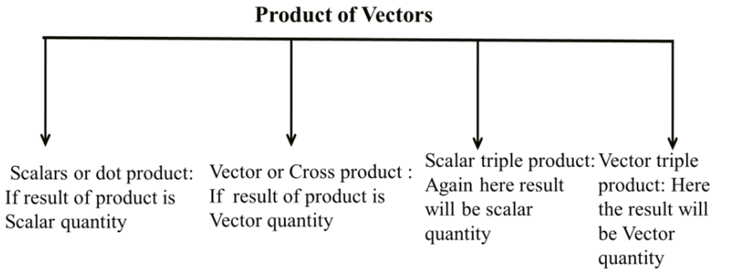
![]()
![]()
![]()
Note: Vector triple product is not in our Physics syllabus.
SCALAR OR DOT PRODUCT
Product of magnitude of two Vectors with cosine of angle between them.
![]()
![]()
![]()
For perpendicular Vectors: ![]() ,q = 90° and cos 90° = 0
,q = 90° and cos 90° = 0 ![]()
![]()
![]()
![]()
![]()
Dot product of Standard unit Vectors:
![]()
![]()
![]()
![]() are mutually perpendicular then
are mutually perpendicular then
the value of m is
(a) - 2
(b) - 3
(c) + 3
(d) + 2
![]()
![]()
2 + m + 1 = 0
m = - 3 Answer (b)
Method to find dot or Scalar product
![]()
![]()
![]()
Finding Scalar and Vector Component (projection)
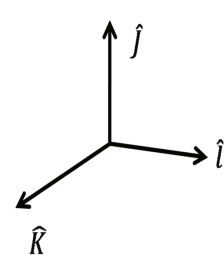
![]()
![]()
![]()
![]()
![]()
![]()
![]()
![]()
![]()
![]()
![]()
![]()
![]()
![]()
![]()
![]()
![]()
![]()
![]()
![]()
![]()
![]()
![]()
Component (projection) in the direction and in the perpendicular direction
![]()
![]()
![]()
![]()
![]()
![]()
![]()
![]()
![]()
![]()
vector or cross product
Product of magnitude of two Vectors with sine of angle between them.
![]()
![]()
For perpendicular Vectors:
![]()
For parallel Vectors:
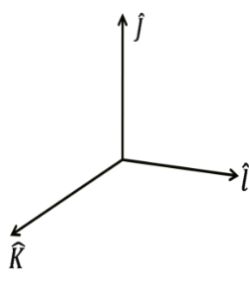
![]()
![]()
![]()
For antiparallel Vectors:
![]()
![]()
![]()
Cross or Vector product of Standard unit vectors
![]()
![]()
USING RIGHT HAND SCREW RULE
![]()
Method to find cross or vector product
![]()
![]()

![]()
AREA OF TRIANGLE![]()
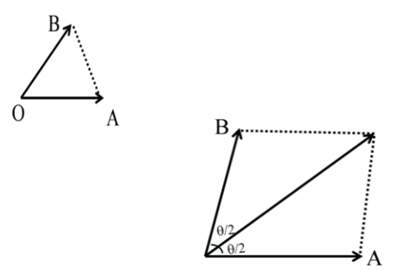
![]()
Area of parallelogram:
![]()
DIAGONAL OF PARALLELOGRAM
Example If the diagonals of a parallelogram are![]() and
and ![]() ,then area of this
,then area of this
parallogram will be
(a) 2 unit2 (b) 3 unit2
(c) 4 unit2 (d) 1 unit2
![]()
![]()
![]()
![]()
![]()
= 2 unit2 Answer (a)
Example: Unit vector perpendicular to two vectors Finding a unit vector
perpendicular to
![]()
![]()
![]()
![]()
![]()
![]()
![]()
![]()
![]()
Example: Consider three Vectors
Scalar triple product
![]()
![]()
![]()

![]()
(a) 0
(b) 6
(c) 12
(d) 18
![]()
![]()
= 2 (3 n-2) -3 (15 + 1) -2 (10 + n) = 0
4n – 72 = 0
n = 18 Answer (d)

 Kaysons Publication
Kaysons Publication
